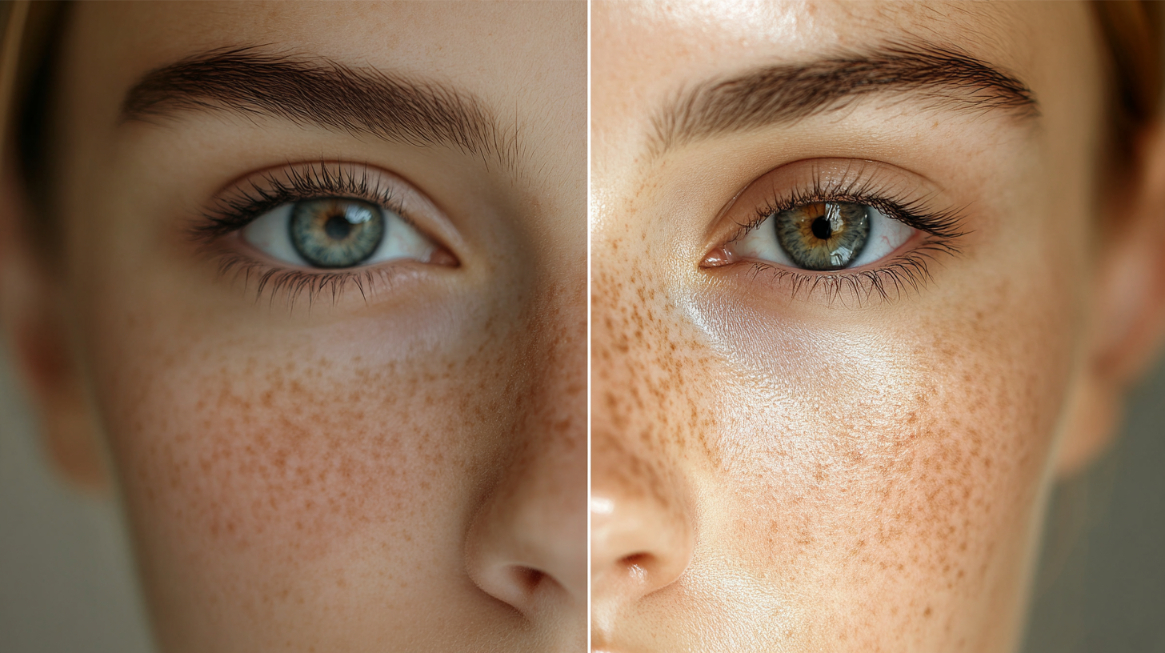Who hasn’t looked in the mirror and wondered how to banish those pesky dark spots? They seem small but can be surprisingly bothersome. Many people struggle with uneven skin tone or hyperpigmentation, which can be caused by anything from sun exposure to aging, acne scars, or even hormonal changes. If you’re considering treatments, particularly laser options, you might be asking yourself, “How many sessions does it take to get rid of dark spots?” At Spoiled Laser, we specialize in transforming your beauty concerns, including those stubborn dark spots. Let’s unravel this question and explore the entire dark spot removal process with you.
Understanding Dark Spots
Dark spots, also known as hyperpigmentation, can appear anywhere on your body but are most commonly visible on areas exposed to the sun such as your face and hands. These spots occur when there’s an overproduction of melanin in your skin.
Causes of Dark Spots
Identifying the cause of your dark spots can guide the treatment plan. Sun exposure is the most prevalent cause, often leading to what dermatologists call “sun spots.” Aging also plays a role. As you grow older, your skin’s natural ability to repair itself slows, and previous sun damage begins to manifest as dark splotches. Hormones, especially during pregnancy or when using certain contraceptives, can cause melasma, a type of hyperpigmentation. Additionally, skin conditions like acne can leave post-inflammatory marks, adding to these concerns.
Types of Treatments For Dark Spots
A variety of treatments are available—ranging from topical creams, which might take longer to show results, to more aggressive solutions like laser therapy. Lasers are particularly effective as they target the pigment in the dark spots, breaking it down without affecting the surrounding skin.
Get Your Free Consultation Today
Laser Therapy: The Process
Laser therapy is a popular choice for dark spot removal because of its effectiveness and precision. It utilizes focused light to specifically target the pigmented areas in your skin. This method promises quicker results compared to traditional creams and serums.
How Laser Therapy Works
Lasers work by emitting a light at a specific wavelength that’s absorbed by the pigment in the dark spots. This light energy is converted to heat, which then breaks down the pigment into smaller particles. These are gradually absorbed and removed by the body’s natural processes.
Benefits of Laser Therapy
One of the biggest advantages of laser therapy is its speed. Many people notice a visible difference after just one or two sessions. The precision of lasers also reduces the risk of affecting surrounding skin, which means downtime is minimal.
How Many Sessions Are Needed?
So, let’s circle back to the big question: how many sessions does it typically take to get rid of dark spots with laser treatment? The answer varies, depending mainly on the severity and cause of the spots, as well as your skin type.
Factors Influencing the Number of Sessions
- Severity and Depth of Pigmentation: Lighter sun spots might fade after just one session, whereas deeper, more stubborn spots might require additional treatments.
- Skin Type and Color: Fairer skin tones often see quicker results as lighter skin absorbs the laser’s energy more efficiently. However, darker skin tones can also benefit; it just might take a bit more time and careful calibration of the laser settings.
- Frequency of Sessions: Typically, treatments are spaced 3-4 weeks apart to allow your skin adequate time to heal between sessions.
Typical Treatment Plans
Based on these factors, a common treatment plan might involve 2-3 sessions for mild cases or up to 6 sessions for more resistant spots.
| Severity of Spots | Typical Number of Sessions |
|---|---|
| Mild | 1-2 Sessions |
| Moderate | 3-4 Sessions |
| Severe | 4-6 Sessions |
Post-Treatment Care
Proper aftercare is crucial to achieve the best results and avoid potential complications.
Immediate Aftercare
After a laser session, your skin might feel slightly warm and sensitive, similar to a mild sunburn. It’s important to protect treated areas from sun exposure by using sunscreen diligently and wearing protective clothing.
Long-term Skincare Routine
Continue to care for your skin by using gentle, non-irritating products. Incorporate brightening serums with ingredients like vitamin C and niacinamide to maintain the results and prevent new pigmentation from forming.
Alternatives to Laser Therapy
While laser treatments are effective, they aren’t the only option. Alternatives may be more suitable depending on your skin type, specific concerns, or budget.
Chemical Peels
Chemical peels involve applying a solution of acids to the face, which exfoliates the top layers of your skin and speeds up cell turnover. They can also be effective in treating dark spots, although they might take a bit longer to see results compared to laser treatments.
Microdermabrasion
This process buffs away the outer layer of skin using a fine-tipped instrument or a special paste. It can help to smooth the skin and fade pigmented spots, though more treatments might be needed for significant results.
Topical Creams
Over-the-counter or prescribed creams containing ingredients like hydroquinone, kojic acid, and retinoids can lighten dark spots. However, they usually require longer time frames and consistent application.
When to Consult a Professional
Dealing with dark spots can be frustrating, and it’s important to know when to seek professional help. If home remedies and over-the-counter treatments aren’t working, or if your spots are changing in appearance (size, color, or texture), consult with a dermatologist or skin care specialist.
Final Thoughts
In conclusion, the journey to a clearer complexion might require a bit of patience. While there’s no magic number of sessions that suits everyone, understanding your specific needs and working closely with a skin care expert can set you on the right path. Spoiled Laser in Las Vegas is here to assist in personalizing a plan that suits your skin’s unique requirements. Feel free to reach out to us at 702-228-5171 if this journey is one you wish to embark upon.



